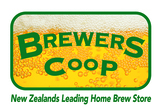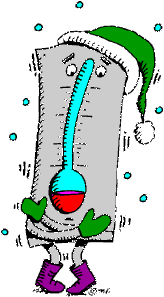The Highs and Lows of Temperature
Have you ever noticed how you favourite beer tastes different when brewed at different times of the year?
Fermenting temperatures have a major influence on the taste of your beer…in fact you will notice a difference in your beer if you brew your beer 4 to 5 degrees warmer than your normal brewing temperature. This is largely due to fruity esters generated from the yeast as it ferments your beer.
In the heat of summer your beer ferments faster in the warmer conditions and this can lead to you beer tasting “fruitier.” In winter if brewing temperatures get too colder for the yeast this too can create undesirable flavours from the stressed yeast struggling to do its job. So what is the ideal temperature to brew the perfect beer?
Consistency is the Key
The first trick is to make sure you are brewing consistently. Using a temperature controller can help to make sure your favourite beer brews at the same temperature that you set irrespective of the heat of summer or the cold of winter.
The right temperature you brew at is largely determined by your yeast selection. While there are many different types of yeast strains in the world, brewing yeasts can generally be grouped into four different groups.
Types of yeast
Before we look at the different yeast groups a word of caution. The beer style on your beer kit doesn’t determine the brewing temperature. For example many lager and pilsner beer kits actually use an ale yeast rather than a true lager yeast as this allows brewers to brew their beers at a warmer temperature. You need to know the yeast strain to determine the brewing temperature. This will make more sense when we look at the following yeast types.
Ale Yeasts - Ale yeasts are top fermenting yeasts and they have a wide temperature range that they ferment at. Generally I find 18 to 22 degrees C is ideal for brewing a great Pale Ale or an exceptional IPA. But there are a couple of exceptions. Wheat beers can be brewed warmer as this can emphasise the banana and clove character that you expect in a German style Wheat beer. Similarly, Saison beers can be brewed slightly warmer in the mid 20 degrees to generate more “spiciness and fruity characters” that you expect in a Belgian Saison.
Lager Yeasts – Lager yeasts are bottom fermenting yeasts that brew cleanest at colder temperatures. These yeasts give you the crispness of a good lager or pilsner. While different lager yeast have temperature ranges, most brew best between 10 and 14 degrees C. Because of this lower temperature range, many brewers prefer to brew their lagers in winter as this works with ambient temperatures at this time of year.
Hybrid Yeasts – While Ale and Lager yeasts are pretty clear, there are a few strains that have characters of both. Yeasts like California Lager are a Lager yeast but they brew ideally at Ale temperatures. While not a replacement for a good lager yeast, these yeasts do mimic that lager crispness while brewing at 18 to 20 degrees C
New Kveik Yeasts – These Norwegian originating yeasts brew warmer and faster than traditional strains. There are several different strains in this group some fermenting clean and some better suited for “Farmhouse Ales.” One of the more common strains is the Voss strain which ferments clean in character in its ideal temperature range of 30-35 degrees C. And at these temperatures means fermentation is typically done in 3 to 4 days.
Planning You Brew
Selecting the correct yeast strain for the style of beer that you plan to brew is key. This will help make sure you get the expected taste and aroma in your beer and reduce the chance of getting undesirable yeast characters. And then making sure you ferment at the ideal temperature for that yeast strain, will help improve the quality of your brew.
Recipe: NZ Pilsner
All Grain -23L
4.5kg NZ Pilsner Malt
250g Caramel Pils
100g Acid Malt
120g Light Crystal
40g Motueka (60min boil)
35g Motueka (15 Min boil)
15g Motueka (5 Min Boil)
25g Riwaka (flameout)
75g Riwaka Dry hop on day 4 (for 5 days)
Saflager s-189 Lager Yeast
For Extract version, replace NZ Pilsner Malt with 2x 1.7kg cans Black Rock Blonde Malt. Use steeping grains and hop additions as recipe above
Posted: Monday 16 August 2021

